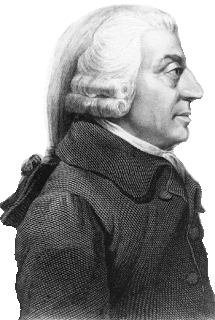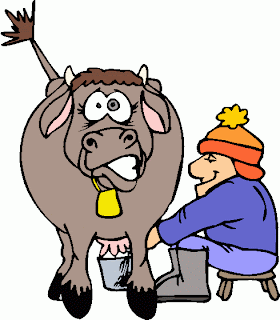Chapter I - Introduction and Summary
 |
| Adam Smith - Our Founding Father |
Chapter 1 – Introduction and Summary
It’s not the strongest of the species that survive, nor the most intelligent, but the one most responsive to change.
Charles Darwin
This book describes and analyzes economic development and economic growth since the start of the Industrial Revolution in the late 1700s.
Some writers describe the current economic trends as the Fourth Industrial Revolution. Other observers and commentators believe that information and communication technology and applications have become so central to the economy that we are in the Information Revolution. And others believe that we are at the beginning of the Biotechnology Revolution. This book will concentrate on the ongoing, underlying dynamics of economic change and, for simplicity, will use Industrial Revolution as the historic label. But it will stress the vital role that information plays in economic development and economic growth.
The information revolution was an integral part of the industrial revolution. Information, through electronic communication starting with the telegraph in the 1840s, and new internal management and control information systems in the second half of the 19th century, made large and complex economic organizations possible.
Any economic discussion should describe or explain the dynamics and the resulting organizational structure of the Industrial Revolution. Market structures are commonly oligopolies (concentrated industries dominated by a few large corporations). Within these structures, large, established corporations and innovative newcomers compete in a process of “creative disruption.”
Different types of information are a part of this process and affect different types of economic decisions. One process is central; new information and knowledge are applied to create new technology (“useful knowledge”), new products and services, and new types of economic organizations.
In a capitalist economic system, corporations attempt to turn the profitable commercialization of knowledge, information, and invention into innovation and, collectively over time, economic development. What economics should describe is the continuous application of information and knowledge, summarized as technology.
Technological innovation and organizational innovation developed together; it was the combination of the two that made economic development and growth possible.
This innovation process is the driver of economic development. Economic development is the dynamic driver of economic growth. Economic growth is the basis for higher standards of living, increases in real income per capita, lower prices, and a greater variety of goods and services.
In summary, this book:
o Emphasizes the dynamic forces in an industrial capitalist economy and how they lead to economic growth and higher standards of living.
o Describes and analyzes the resulting industry and corporate structures and how they affect competition, market behavior, and prices. Emphasizes the central role played by innovation. Feasible strategies of different types of corporations are discussed.
o Highlights the role of various types of information in the economy and how different types of information influence competition and market outcomes.
Descriptions of market mechanisms are presented. After that, the book discusses a competitive, industrial/informational economy. It attempts to describe and explain the dynamics and structure of an economy dominated by large corporations and subject to ceaseless technological and organizational change.
Economic theory and economic history are taught separately. Economic theory is “ahistorical,” supposedly valid over the 250 years of the Industrial Revolution. This is hard to believe given the incredible technological and organizational change that has occurred, and continues to occur. Theories that lead to equilibrium seem inadequate to explain the “permanent revolution” of ceaseless change and disruption.
Any discussion of economic dynamics – change over time – involves history. Here, economic dynamics and resulting structure are illustrated by case studies from economic and business history.
Most of this discussion assumes a relatively unregulated, private enterprise, mature capitalist economy.
The Industrial/Informational economy is facing several crises. The core crisis is the exponentially rising social costs of industrial production and consumption such as pollution and climate change. These costs are threatening the long-run survival of the underlying economic system.
Economic growth and development are influenced by underlying long-run trends. Many long-term trends are in the process of slowing or reversing, particularly demographic trends. A stable or declining number of people in the labor force is one cause of the increased investment in capital-intensive and information-intensive production. On the other hand, greater research and investment in biotechnology is partly the result of an aging population.
Macroeconomics focuses on theories and analysis as support for government economic programs such as monetary and fiscal policies. Here, however, I would like to focus on the tensions and stresses between an expanding global economy and a political world of 200 nation-states: in particular, the conflicts between multinational corporations and national governments.
My experience as a corporate economist and strategic planning manager, small business manager and director, business consultant, and nonprofit board member has been in the American economy. As a college professor I have taught a wide variety of courses in economics, finance, management, international economics and politics, and economic history.









Comments
Post a Comment